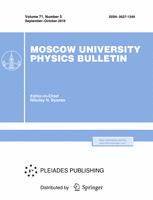A complex system is being studied experimentally, which is a honeycomb structure, normal-conjugated with the compositional structure, and containing within itself a defect of the “water condensate” type in the form of ice crystals. To detect such a defect, the phenomenon of acoustic emission is used. Usually, to produce acoustic emission, mechanical impact on the object is used. But, unlike this traditional loading (compression or tension) of a sample by external forces, this uses a variation in the temperature field in which the sample is placed. During the heating of the experimental sample, the ice-water phase transition begins, leading to the phenomenon of acoustic emission. The dependences of the amplitudes of acoustic signals on time and on the rate of temperature change reveal a clear difference between samples with the “water accumulation” defect and samples without such defects.
$^1$LLC Yandex



